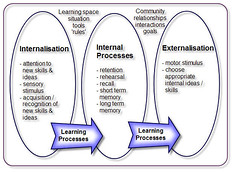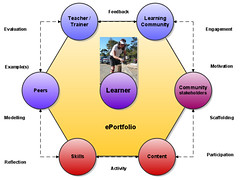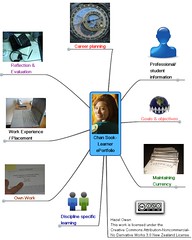 Image by hazelowendmc via Flickr
Image by hazelowendmc via FlickrTrent Batson, executive director of The Association for Authentic, Experiential and Evidence-Based Learning (AAEEBL), provides an initial summary on the current status of global portfolios in his article: "Review of Portfolios in Higher Education: A Flowering of Inquiry and Inventiveness in the Trenches". The article indicates the variety of current uses for ePortfolios, and how they are assisting learners to develop digital literacy, communication, and writing skills. Reference is also made to the formation of The Fund for the Improvement of Post Secondary Education, and how it heralds the emergence of the field of portfolio studies. The article concludes with a recognition of the up and coming technologies for ePortfolios, as well as a comparison of course management systems and portfolios:
"course management systems, no matter the name, usually are defined by and focused on a course, which has a beginning and an ending. Portfolios are instead most often identified not with a specific course but with the learner over time" (Batson, 2010).
 |
Dynamic interconnectedness: ePortfolios |
One of the comments that follows Trent Batson's article poses the question "Why do portfolios always seem to end with graduation?", and goes on to suggest: "Let's not continue to use portfolios just as a repository for student work. They can be more than that; make it an online space alive with activity, interaction, and connections" (Brian). This comment highlights the current uneasy dichotomy of assessment / lifelong learning; and assessment / creativity.
Perhaps, as the use of ePortfolios matures, then education will find a way to enable learners, while also fulfilling course requirements, and in turn encourage them to take their ePortfolio forward with them(??). But it may prove to be a long arduous road to reach this destination







2 comments:
Read what some college professors are using as artifacts in portofolio assessment.
Machinima As An Artifact in A Virtual Portfolio
http://gridjumper.wordpress.com/wp-admin/post.php?post=1477&action=edit
@Grid Thanks for your comment and link. The link takes you to an 'edit' version of your page (guess you must have been logged in :-). This is the link to the post you indicated: http://gridjumper.net/2011/01/18/machinima-as-an-artifact-in-a-virtual-portfolio/
Some innovative things happening in virtual worlds / simulations and ePorfolios, especially in health (see, for example, midwifery - http://slenz.wordpress.com/).
I guess, for me, it's a combination of innovative practice such as that you've indicated, as well as questions of ownership, roles, hierarchy, empowerment etc in education...and the relationship of these to creativity and growth :-)
Post a Comment